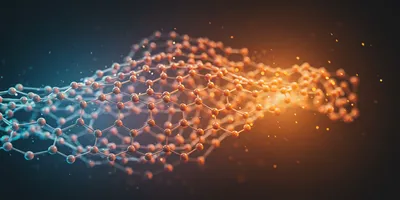The Unseen Revolution in Materials
Materials science is a dynamic field at the intersection of physics, chemistry, and engineering, focused on the discovery and design of new materials. These materials are the building blocks of modern technology, driving innovations that range from high-performance electronics and sustainable energy solutions to advanced medical treatments. For laboratory professionals and materials scientists, understanding these breakthroughs is not just academic; it's essential for staying at the forefront of research and development. This article will delve into ten of the most significant advances in materials science, exploring their properties, applications, and the profound impact they have had on various industries. We will highlight the key discoveries, the challenges they overcame, and the exciting future they promise for materials innovation.
The Top 10 Breakthroughs in Materials Science
1. Graphene: The Single-Atom Wonder

Gemini (2025)
Graphene is a two-dimensional allotrope of carbon, consisting of a single layer of carbon atoms arranged in a hexagonal lattice. Its groundbreaking discovery involved a simple but clever method using adhesive tape to peel off layers from graphite. This unique atomic structure gives it an unparalleled combination of properties. For example, its extreme strength stems from the strong covalent bonds between carbon atoms, while its exceptional electrical and thermal conductivity is due to the free-moving delocalized electrons that can travel across the entire sheet without resistance. These properties make it a foundational material for future nanotechnology and materials science innovations.
- Properties:
- Extremely thin (one atom thick)
- 200 times stronger than steel
- Excellent conductor of heat and electricity
- Nearly transparent and highly flexible
- Applications:
- Electronics: Faster, more efficient transistors and flexible screens
- Energy: High-capacity batteries and supercapacitors
- Composites: Lightweight and strong materials for aerospace and automotive industries
2. Aerogel: The Frozen Smoke

Gemini (2025)
Aerogel is a synthetic, highly porous material derived from a gel by replacing the liquid component with a gas. The manufacturing process, typically using supercritical drying, prevents the gel's solid network from collapsing. This results in a material that is over 99% air by volume. This high porosity and the incredibly small pore size, which inhibits convective heat transfer, are what give aerogel its record-breaking low density and thermal conductivity. It's often referred to as "frozen smoke" because of its translucent, ethereal appearance.
- Properties:
- Possesses the lowest density of any known solid
- Extremely low thermal conductivity
- High surface area and porosity
- Applications:
- Insulation: High-performance thermal insulation for space suits and buildings
- Environmental Cleanup: Adsorbing oil spills and other pollutants
- Scientific Research: Particle detectors and sample collectors
3. Self-Healing Polymers
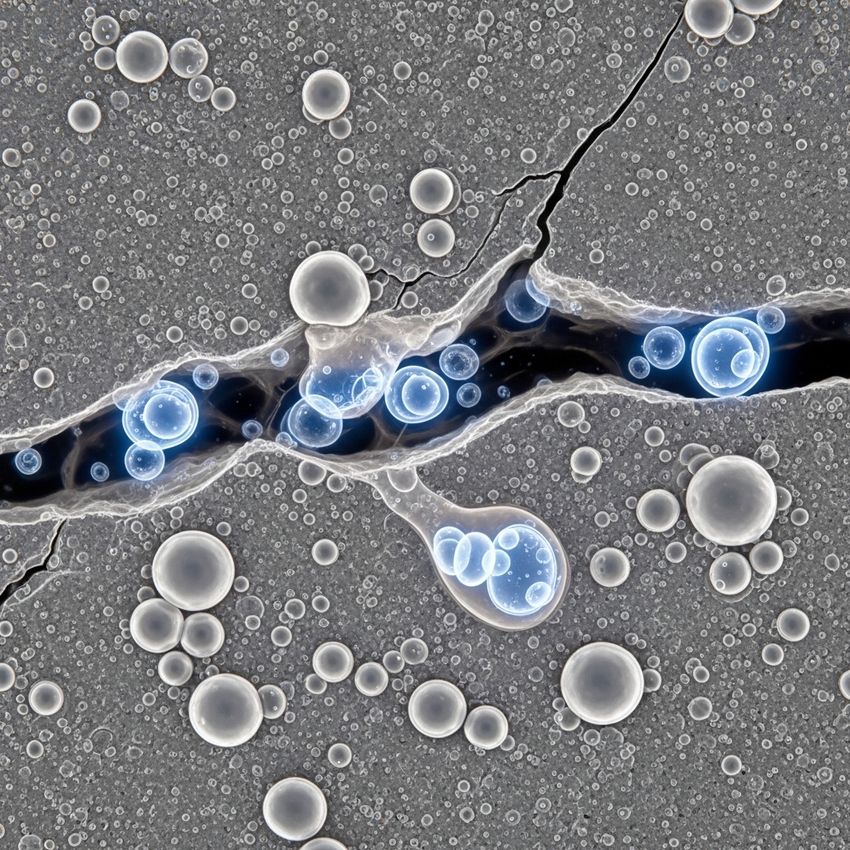
Gemini (2025)
Self-healing polymers are smart materials designed to repair themselves autonomously after being damaged. There are two main mechanisms. Extrinsic self-healing involves incorporating microcapsules or vascular networks filled with a healing agent and a catalyst into the polymer matrix. When a crack forms, the capsules rupture, releasing the healing agent which then polymerizes to mend the fracture. Intrinsic self-healing, on the other hand, utilizes reversible bonds (e.g., hydrogen bonds or dynamic covalent bonds) within the polymer chains themselves, which can reform to repair damage upon application of an external stimulus like heat.
- Properties:
- Autonomous crack repair
- Extended material lifespan
- Reduced need for manual repair
- Applications:
- Aerospace: High-performance aircraft coatings
- Electronics: Protective layers for flexible screens and circuit boards
- Consumer Goods: Durable coatings for appliances and vehicles
4. Quantum Dots: Tiny Crystals, Big Impact

Gemini (2025)
Quantum dots are semiconductor nanocrystals whose electronic properties are determined by their size and shape. The key principle behind them is the quantum confinement effect. At the nanoscale, the electron's movement is restricted, forcing its energy levels to become discrete and size-dependent. This means that by controlling the size of the quantum dot, scientists can precisely tune the color of light it emits. Smaller dots emit higher-energy light (bluish), while larger dots emit lower-energy light (reddish), a property that is highly valuable for applications requiring precise color control, like in QLED displays and biological imaging.
- Properties:
- Size-tunable light emission
- High color purity and efficiency
- Strong photostability
- Applications:
- Displays: Used in QLED televisions for vibrant, accurate colors
- Biomedical Imaging: Fluorescent markers for cancer detection and cellular research
- Solar Cells: Improving the efficiency of photovoltaic devices
5. High-Temperature Superconductors

Gemini (2025)
Superconductivity is a quantum mechanical phenomenon where a material conducts electricity with zero electrical resistance below a critical temperature. The discovery of high-temperature superconductors (HTS) in the 1980s was a major breakthrough because these materials exhibit superconductivity at temperatures significantly warmer than traditional superconductors, though still very cold. Specifically, they work at temperatures above the boiling point of liquid nitrogen (-196 °C or 77 K), which is far more cost-effective and easier to handle than liquid helium. This makes their use in applications like medical imaging (MRI) and power transmission more feasible.
- Properties:
- Conducts electricity with zero resistance
- Expels magnetic fields (Meissner effect)
- Critical temperature is above liquid nitrogen's boiling point
- Applications:
- Medical Imaging: Powerful magnets for MRI and NMR machines
- Energy: Efficient power transmission lines and magnetic energy storage
- Transportation: High-speed maglev trains
6. Metallic Glass (Amorphous Metals)
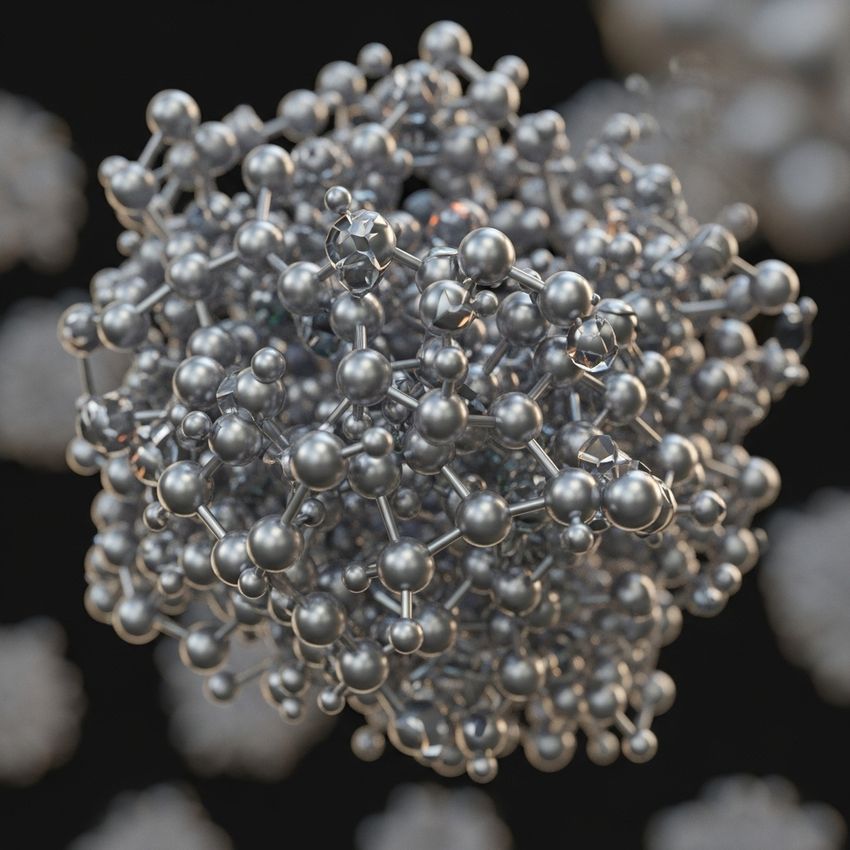
Gemini (2025)
Metallic glass refers to a class of metal alloys with a non-crystalline, or amorphous, atomic structure. Unlike ordinary metals which have an ordered, repeating crystalline lattice, the atoms in metallic glass are arranged randomly. This disordered structure prevents the formation of defects known as dislocations, which are responsible for plastic deformation in conventional metals. The absence of these defects makes metallic glass exceptionally strong, highly elastic, and resistant to corrosion, though they can be brittle.
- Properties:
- Extremely strong and hard
- High elasticity
- Excellent corrosion and wear resistance
- Low magnetic losses
- Applications:
- Sports Equipment: High-end golf clubs and tennis rackets
- Medical Instruments: Surgical blades and medical implants
- Electronics: Casings for devices and transformer cores
7. Carbon Nanotubes (CNTs)
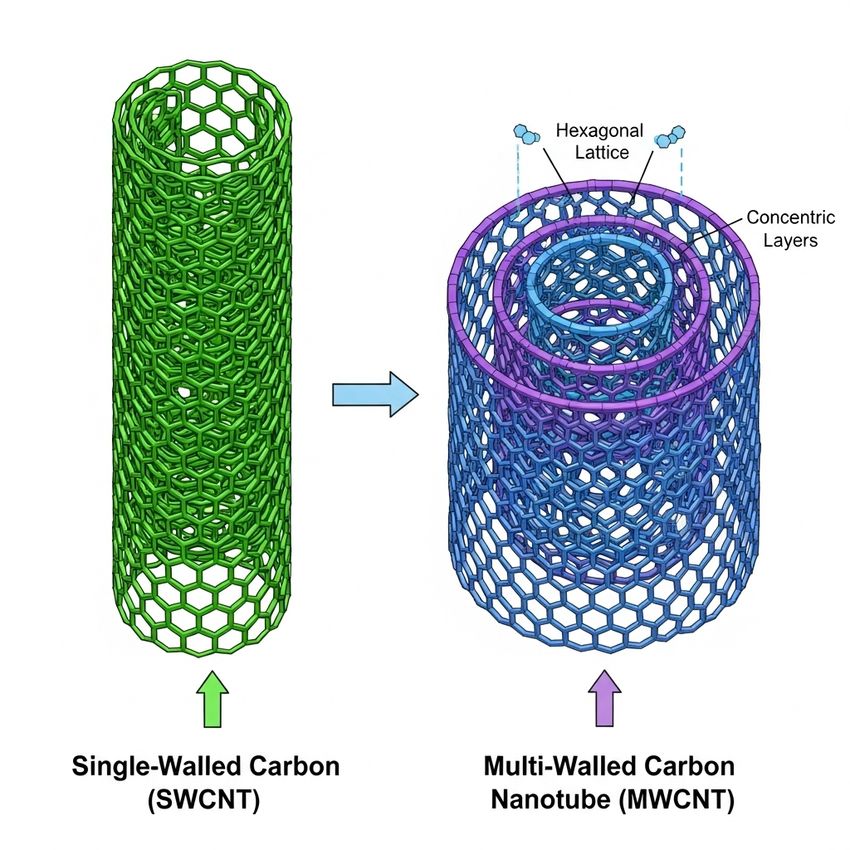
Gemini (2025)
Carbon Nanotubes (CNTs) are cylindrical structures made from a single sheet of graphene rolled into a tube. Their properties are highly dependent on their dimensions and chirality (the angle at which the graphene sheet is rolled). This chirality can dictate whether the CNT behaves like a metal or a semiconductor. There are two main types: single-walled CNTs (SWCNTs), which are a single tube, and multi-walled CNTs (MWCNTs), which consist of multiple concentric tubes. Their remarkable strength, high aspect ratio, and electrical properties make them ideal for a wide range of applications from advanced composites to nanoelectronics.
- Properties:
- Up to 100 times stronger than steel
- Excellent thermal and electrical conductors
- High aspect ratio and surface area
- Applications:
- Electronics: Transistors, conductive inks, and interconnects
- Composites: Strengthening materials for ballistic vests and lightweight structures
- Biotechnology: Drug delivery systems and biosensors
8. Phase-Change Materials (PCMs)

Gemini (2025)
Phase-Change Materials (PCMs) are substances that absorb and release a large amount of energy in the form of latent heat during a phase transition (e.g., from solid to liquid). Unlike sensible heat, which causes a temperature change, latent heat is absorbed or released at a constant temperature. This unique property allows PCMs to store and release significant amounts of thermal energy without a large change in their own temperature, making them invaluable for thermal management applications like regulating the temperature of electronics, buildings, and clothing.
- Properties:
- Store and release large amounts of latent heat
- Maintain a stable temperature during phase change
- High thermal storage capacity
- Applications:
- Thermal Management: Regulating temperature in electronics and batteries
- Building Materials: "Smart" walls and roofing for energy efficiency
- Textiles: Temperature-regulating fabrics for clothing and bedding
9. Topological Insulators
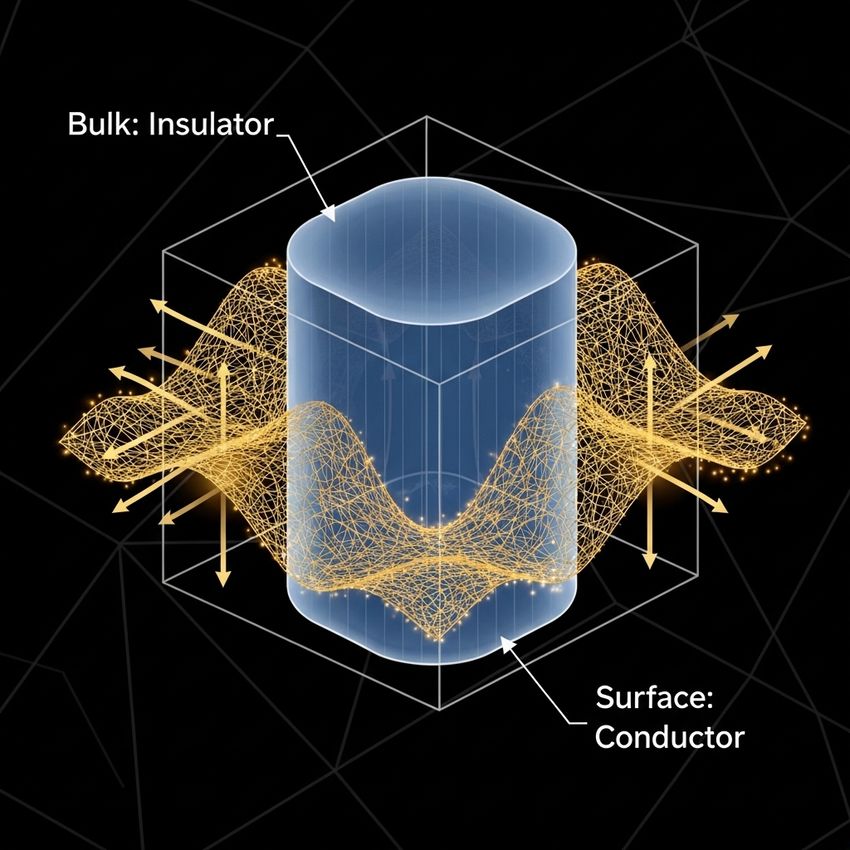
Gemini (2025)
A topological insulator is a quantum material that behaves as an electrical insulator in its bulk (or interior) but acts as a perfect electrical conductor on its surface. This unusual behavior is due to its unique electronic band structure, which is protected by time-reversal symmetry. The electrons on the surface are in a protected state, meaning they can move without scattering off imperfections, making them ideal for next-generation, low-power electronic devices and quantum computing.
- Properties:
- Insulating in the bulk, conducting on the surface
- Surface conduction is robust against defects and impurities
- Unique quantum electronic states
- Applications:
- Quantum Computing: Potential for robust qubits
- Spintronics: Developing devices that use electron spin, not just charge
- Low-Power Electronics: Highly efficient transistors and memory devices
10. Metamaterials: Beyond Natural Properties
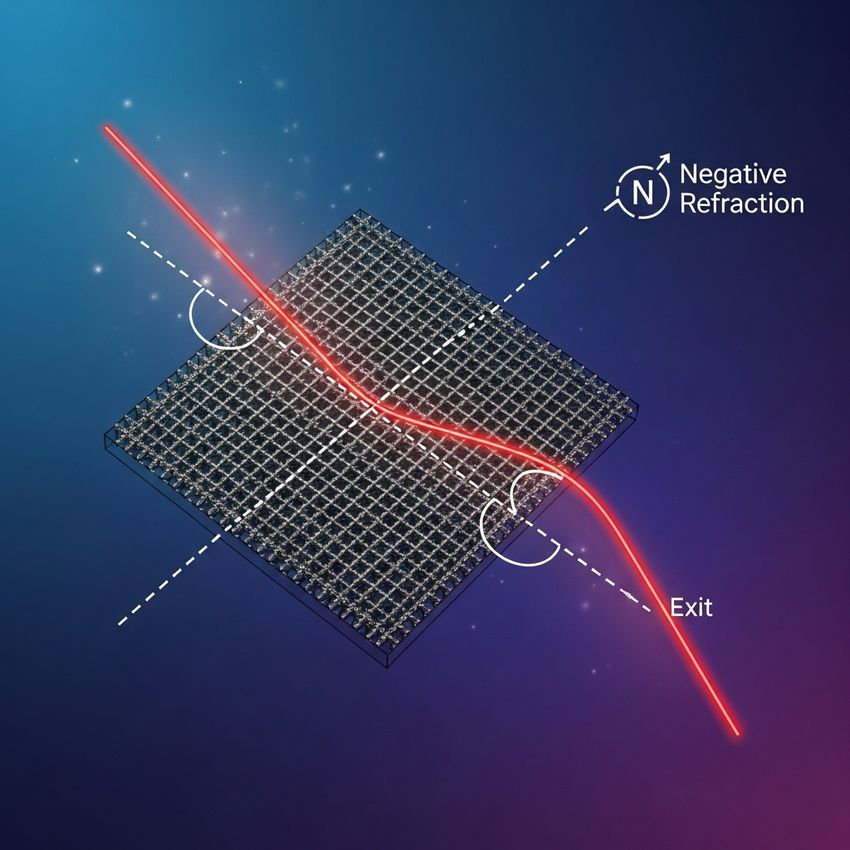
Gemini (2025)
Metamaterials are artificially engineered materials whose properties are derived from their designed structure rather than their chemical composition. They are typically composed of repeating sub-wavelength structures that interact with waves (like light, sound, or microwaves) in unusual ways. For example, by designing the size and arrangement of these structures, a metamaterial can be made to have a negative refractive index, a property not found in nature. This allows them to bend light in a way that could lead to "invisibility cloaking" and other groundbreaking applications.
- Properties:
- Exhibit properties not found in nature (e.g., negative refractive index)
- Manipulate electromagnetic, acoustic, or seismic waves
- Properties are a function of structure, not composition
Applications:
- Optics: "Invisibility" cloaks and super-resolution lenses
- Antennas: Miniature, highly efficient antennas
- Acoustics: Advanced soundproofing and acoustic cloaking devices
Conclusion: The Materials Revolution Continues
The breakthroughs in materials science listed above represent a new frontier of innovation, providing laboratory professionals with the tools to tackle some of the world's most pressing challenges. From the development of sustainable energy systems and advanced medical technologies to the creation of next-generation electronics, these new materials are the foundation upon which the future will be built. The ongoing pursuit of novel materials properties and synthesis techniques will continue to drive a revolution, with collaborative R&D and sophisticated laboratory analysis at the heart of every new discovery.

